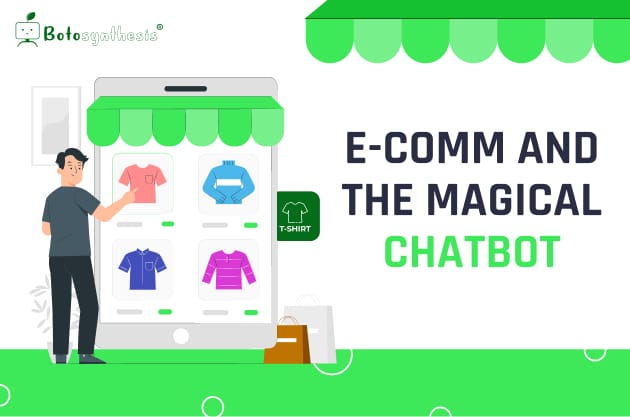We are living in an era where anything can be ordered with just one click. It is like, you think of a service or a product, click on placing an order, and shortly it would be with you. It is quite dispensable that the eCommerce sector is rapidly evolving with a statistical growth prediction of $4.5 trillion in the year 2021. The reason behind this dramatic growth is the change in the shopping patterns of consumers over time. Let me quote an example before you to stand on a rigid side — Millennials and Gen Xers are the biggest online shoppers, with 67% of millennials and 56% of GenXers preferring to shop online.
Also, marketers claim that 59% of eCommerce sales were made through mobile. The reasons supporting this major figure might be-
- Mobile devices follow everywhere they go.
- Seamless shopping experiences.
- Mobile wallets are making it easier to proceed with payments.
- Easy and handy means to share the information over a multitude of platforms or with friends.
Nowadays we experience and see that the shopping experience has taken a “conversational commercial face” as a paramount segment of businesses and buyers are connecting through mobile applications. Today, companies are integrating chatbots in their applications to instantly communicate with customers, resolve their issues, and maintain a trademark of ‘Valuing Thy Customers’ in the market.
Before moving forward, let us look at the necessity of a chatbot in e-commerce?
→ Well! The fundamental reasons behind designing a chatbot for eCommerce companies are –
- Offer and highlight the buyers with more product recommendations or displaying the entire collection to them.
- Provide instant customer support.
- Eradicate lingual barriers between the customer and the selling parties through a chatbot.
- Discover more potential buyers across social media.
- Enhancing the overall shopping richness and user experience over an application or a website.
- Notify the customer’s with the updates and notifications about their product deliveries, delays, offers, and recommendations. Additionally, providing them with personalized service.
After going through the needs and the highlights of an eCommerce chatbot, now it is time to understand the working of a chatbot.
→ First and foremost, before adding a chatbot to a business, it is significant to understand how this technology works. Understanding the different types of bots present in the market will help you to land on a conclusion with a perfect choice of a chatbot. Chatbots can be broadly classified into two different categories –
- Rule-Based Chatbots: These are functions, based on a set of restrictive rules as they are extensively programmed to reply to specific commands rather than interpreting a user’s language. These work well if the users are expected to have simple queries that refer to a limited set of information.
- AI Chatbots: These are the chatbots that function through Machine Learning and use AI to handle a wide range of conversations, queries, and requests from users. Moreover, AI chatbots can interpret a user’s language to understand and meet their needs on time. Also, they are programmed to learn naturally from previous interactions and handle complex situations with ease.
A chatbot can learn about customers’ preferences to boost more purchases and provide personalized customer service.
Now, the question will come to your mind that — How would I evaluate and measure the chatbot’s performance and the profit which it is yielding to an organization?
→ Most importantly, simply designing and integrating a chatbot would not drive your customers to the purchasing pool unless and until the chatbot is helpful, informative, or engaging.
To ensure that the chatbot is benefiting your buyers and driving sales, you have to measure its activity with chatbot analytics tools. This data includes basic figures which indicate your bot’s helpfulness, engagement, and retention rates, as well as some of the advanced metrics to measure sales conversions. The chatbot stores useful data of the lead to approach them further and it is also useful for taking a review of the user experience so that there can be a track of the performance of a chatbot, hence one can measure user satisfaction level.
So, the future is here, and below are some of the listed reasons for how chatbots can be more fascinating to users instead of mobile applications and websites for eCommerce-
- Insignificant to download an application for each commercial company: Most of the chatbots are built on the existing messaging platforms today and you end up having all the chatbots within the same application.
- No registration: What a delight it would be to have no new names, no new passwords, no new verifications or authorization?
- Abandoned cart reminders: When users leave their carts abandoned, the chatbot automatically follows up with the customer and reminds them to come back and complete the purchase.
- 24/7 Service: Chatbots are active as per the user’s desire to shop, either it is at midnight or during the day.
- Instant Support: Chatbots are well versed in case of customer service and the average time to start a chat.
To wrap up I would like to highlight the major takeaways from this article. There are not clear and well-established “best bot practices” yet, since the technology is new. Talking to a robot might sound foreign but have made many brands more approachable to buyers. These bots are personal in remembering customers’ preferences and are convenient as an offer 24/7 service.
Now it is entirely up to you, as a merchant to figure out how your company’s chatbot can easily reach and serve your key customers.








